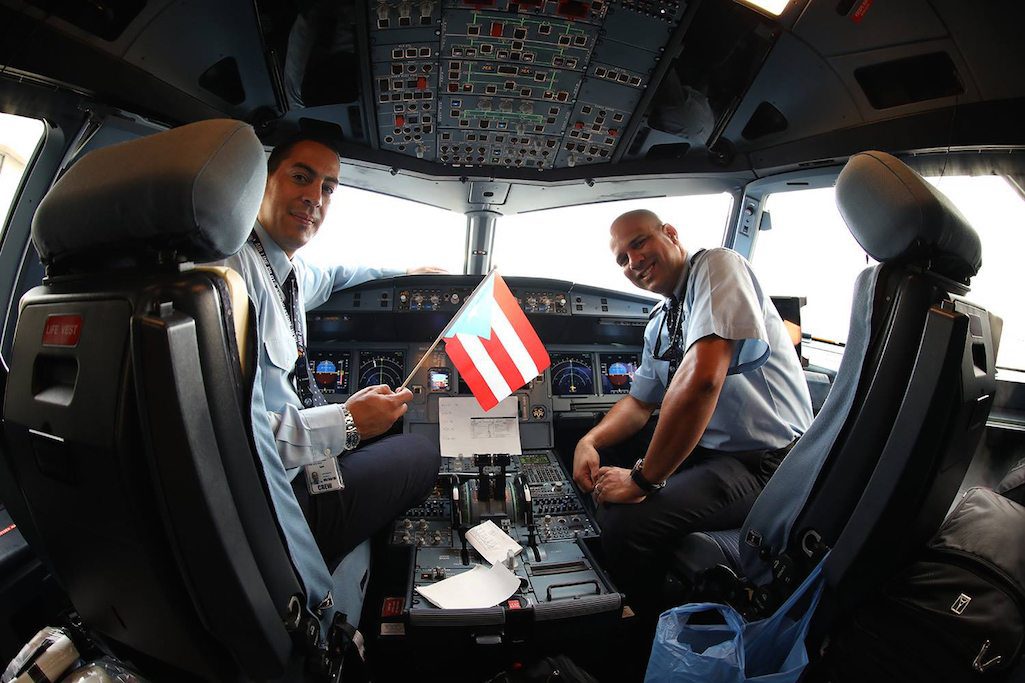Skift Take
JetBlue has been good to Puerto Rico, but the airline has no choice. The island has been devastated by Hurricane Maria, and tourists won't be able to return soon. JetBlue needs to move some flights to other popular tourist destinations.
After American Airlines started withdrawing from its San Juan, Puerto Rico hub about nine years ago, JetBlue Airways saw an opportunity, calculating it could make profits in a market abanonded by a legacy airline with higher costs.
For JetBlue, it has been a successful strategy, and in recent years, the airline has been flying about 50 daily flights from the island, the majority of them from San Juan. Puerto Rico has accounted for about 6 to 7 percent of JetBlue’s total capacity.
It’s the largest airline in Puerto Rico, supplanting American, which as recently as 2008 operated more than 90 flights, about half on turboprops flying within the Caribbean. Unlike American’s old hub, JetBlue has focused on taking travelers from larger cities, such as Boston and New York, to Puerto Rico, rather than using San Juan as a connecting hub for the rest of the Caribbean.
But Hurricane Maria in September devastated Puerto Rico, and on JetBlue’s third quarter earnings call, executives said they would need to drop some flights, both this year and next. They said they expected that full demand for flying to Puerto Rico — a market executives called a “very strong and profitable franchise” — might not return until the end of 2018.
JetBlue executives said they plan to cull flights popular among leisure travelers — tourists who head to the island’s hotels and beaches.
But they said about two-thirds of JetBlue’s traffic to and from Puerto Rico is VFR — an industry term for “visiting friends and relatives,” and flights catering to that demographic will remain. JetBlue executives said they expect these travelers, who usually do not need hotels, will continue to fly to and from the island.
For tourists, JetBlue likely will move the flights from Puerto Rico to other islands, including Aruba, Grand Cayman, and Barbados, where infrastructure is in better shape.
“We are very confident about our options to deploy that capacity,” said Marty St. George, JetBlue’s executive vice president for commercial and planning. “It’s important to note that we are deploying that capacity in places that I would call temporary, because we do expect that capacity will go back to Puerto Rico as the island redevelops.”
Analysts expected JetBlue would eventually cut some capacity to Puerto Rico.
“We assume JetBlue reallocates some PR capacity to other markets, but that takes some time to do, and if those other markets offered better returns pre-storms to PR, we assume JetBlue would have made that move already,” analyst Hunter Keay of Wolfe Research said in a note late last month.
St. George said JetBlue would like to resume all the flights it had before the storm, “if not more.” But he added it will only do so if it believes the market can support them.
Tough Quarter for Weather
Maria was not the only hurricane to hit a JetBlue focus city in the third quarter.
Irma forced the Fort Lauderdale airport to close for several days, disrupting JetBlue’s operations there. While operations have returned to normal, JetBlue executives said demand has not fully recovered.
However, they said they’re optimistic demand for South Florida travel will fully recover by next month.
“Following a large weather event, it is common to see lingering demand impact,” CEO Robin Hayes said. “The data suggests that Florida bookings will return to normal by November.”
Both storms affected profits
The two storms caused JetBlue to cancel more than 2,500 flights, and, not surprisingly, it hurt third-quarter profits.
On the call, Hayes said JetBlue produced earnings per share of 55 cents, saying the number would have been six cents higher if not for the storms. He said “ongoing recovery” likely will reduce fourth quarter earnings per share by 10 to 13 cents. But he said fallout from the storms should not hurt the airline’s profitability in 2018, in part because JetBlue will move excess Puerto Rico capacity elsewhere.
For the third quarter, JetBlue produced net income of $179 million, a decrease of $20 million compared to the same period last year. The company reported earnings per share of 55 cents in the third quarter of last year.
Revenue per available seat mile, a closely watched metric that measures how much money an airline makes for each passenger flown one mile, increased 0.9 percent for the quarter, year-over-year. However, its cost per available seat mile, not including fuel, increased 2.7 percent.
The Daily Newsletter
Our daily coverage of the global travel industry. Written by editors and analysts from across Skift’s brands.
Have a confidential tip for Skift? Get in touch
Tags: airline innovation, earnings, hurricane irma, hurricane maria, jetblue airways
Photo credit: With Puerto Rico reeling, JetBlue has flown many relief flights to the island, with planes filled with supplies. But the airline is making plans to cut some flights to Puerto Rico, since it has little infrastructure for tourists. JetBlue Airways
